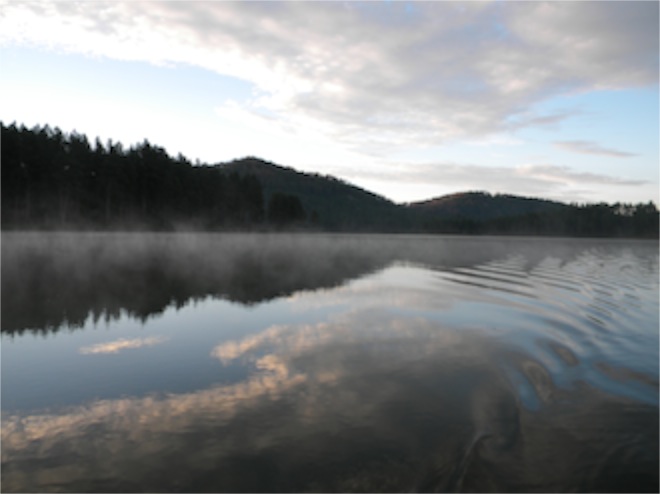Reflection
28/08/13 05:36
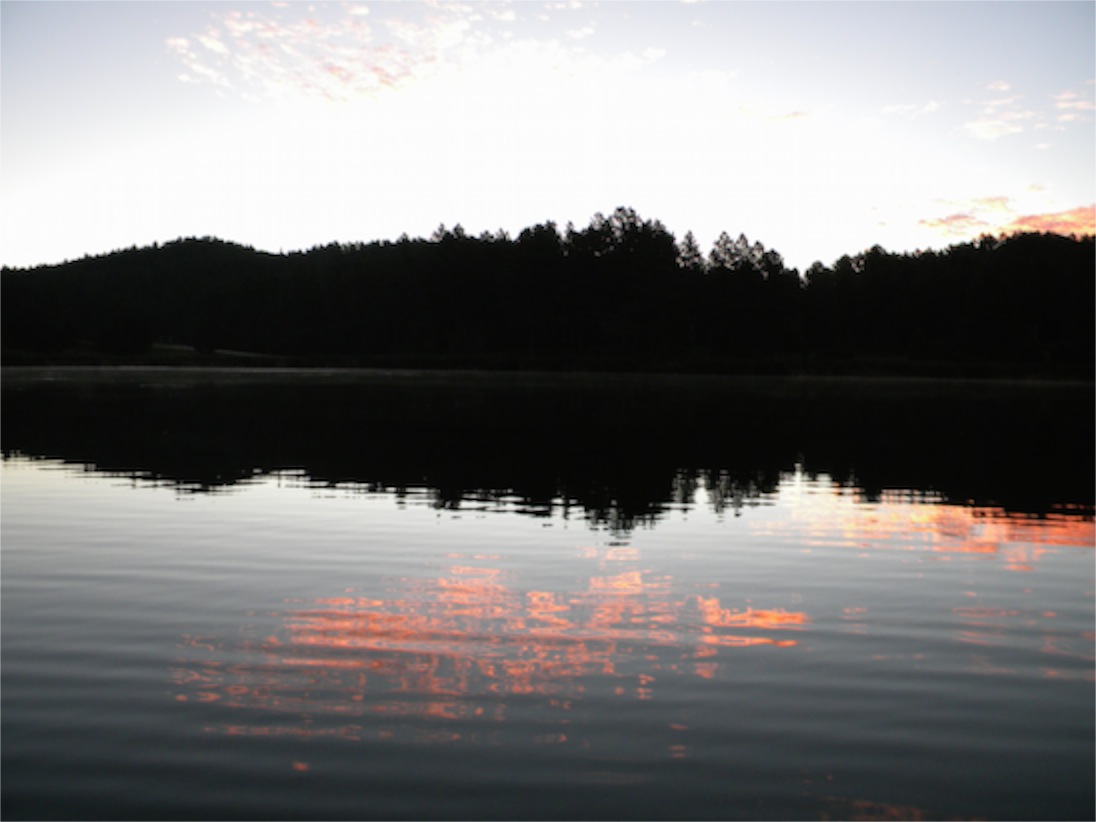
One of the fascinations of paddling on small lakes and ponds is the visual impact of reflection. The water reflects the elements that rise above the water in such a way that paddling a canoe or kayak is a bit like gliding across the surface of the mirror. If you look straight down right next to the boat, you can easily see that the world under the water is quite different from what is above. It isn’t difficult to see the plants that grow in the lakes and ponds around here. It isn’t rare to see the fish that make their home in that world. But if you gaze outward toward the horizon, especially in the morning or evening when the light angles are low, the lake shows an upside-down rendition of the space above the lake. Mountains and hills become symmetrical shapes with the waterline running right down the middle. The colors of the sky and cloud forms get a second display on the canvas of the water. Some days the water is glassy smooth and the reflection is like a gloss photograph held up against the matte of the real world. Some days the wind moves the water so that the reflection has texture that isn’t present in the land above.
It never ceases to fascinate me.
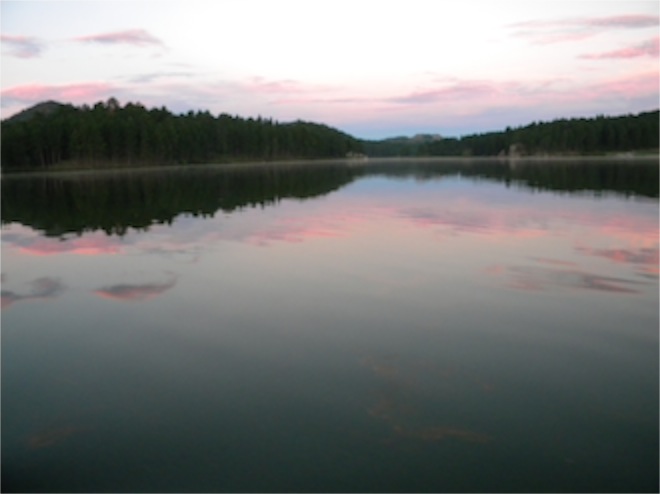
But I am rarely in a scientist’s analytical mood when I am paddling. The process is more like art appreciation. I look and behold beauty and use my memory and my camera to capture enough of it to remember and perhaps even to share with someone else. The result is that there are a lot of my photographs that are taken with the water line crossing the middle of the picture. A trained photographer will tell you that this makes for a boring photograph. The rule of thirds applies to classic photographic composition: make one-third sky and two-thirds water or the other way around: one-third water and two-thirds sky. Frame the shot so that the eye is drawn to the symmetrical line, but the line doesn’t run right in the middle of the picture. Still, I like to place that line in the middle. It captures the feeling of paddling. Being in a canoe or kayak is like sitting right on the water and the perception is of being in the middle of something, not at the top or bottom.
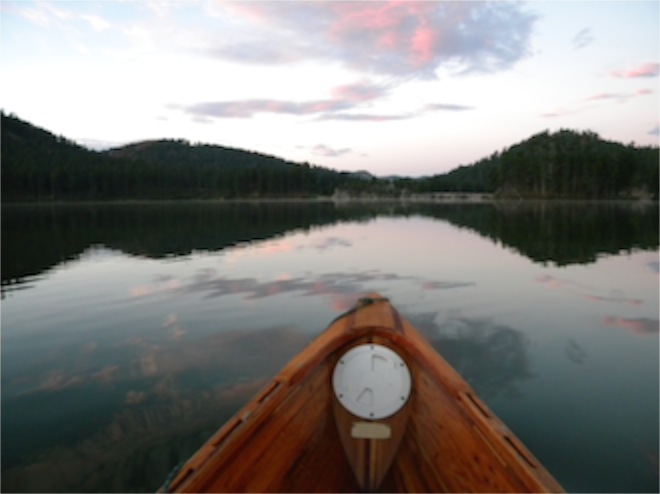
Traveling on the water is a unique gift. When we go for a walk in the forest, we leave our footprints behind. Sometimes we trample a small flower or other plant. Our footprints, combined with those of other hikers and walkers, compress the soil. On a steep hillside, our trails become pathways for water during the spring runoff and summer showers and the water further erodes the landscape. The presence of people on the surface of the land often leaves behind many signs that we have been there. On the water, in a canoe, there is a gentle ripple of a wake that soon dissipates and there is no sign of where we have gone. You can’t track the path of a canoe after it has passed. Traveling by canoe gives me the sensation of being able to observe nature without disturbing it. Of course my presence does have an impact. The ducks scatter and complain at my approach. I interrupt a heron’s fishing with my attempts to take pictures of the bird. Usually the birds return quickly after my passing, but they have responded to my presence. And I transport my canoes to the water in a car or pickup. Such modes of travel consume resources and leave their imprint of pollution. Still the impact of traveling by canoe is lighter than that of many other modes of transportation.
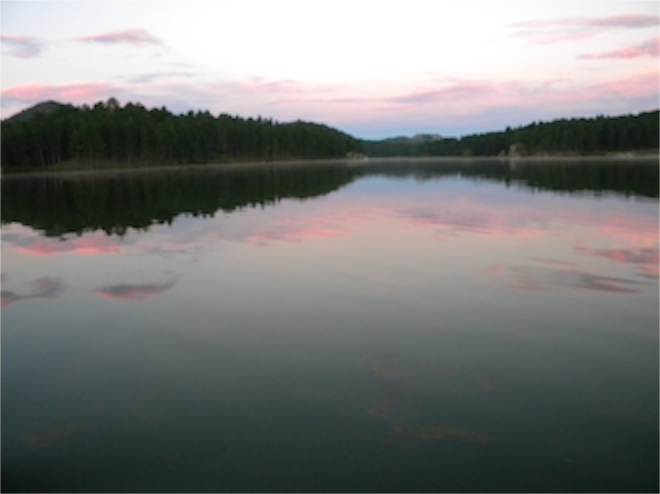
Even though I often paddle on the same lake many times in a row, each trip is different from all of the other ones. I see a bird or animal that I have not noticed on previous trips. The shape of the clouds in the sky is always new and different from other days. Temperature has its affect on how much mist is rising from the surface of the lake. Changes in weather change the colors of the plants and the activities of the animals. Some days I am energetic and paddle quickly. Other days I am lazy and paddle slowly. Each trip to the lake is a unique experience. I could do it over and over again and not become bored. And there are advantages to the repetition. I know where the beaver lodges and osprey nests are located. I know some of the heron’s favorite fishing spots. I know which parts of the lakeshore are favored by the ducks for their nests and where to find the red-winged blackbirds perched atop the cattails.
